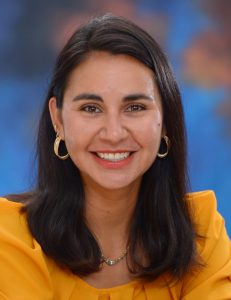by Jaclyn Y. Garver
NCMPR Communication Specialist
Fort Wayne, IN
 I’ve been obsessed with AP Style since I first learned what it was and how to use it – the order and logic of AP Style have always appealed to me. So when The Associated Press updates its stylebook or issues a newsletter, I take note.
I’ve been obsessed with AP Style since I first learned what it was and how to use it – the order and logic of AP Style have always appealed to me. So when The Associated Press updates its stylebook or issues a newsletter, I take note.
I found April’s newsletter especially enlightening, as it highlighted AP’s new chapter on inclusive storytelling, which I read with interest. I could say it’s in part because diversity, equity and inclusion is a strategic priority for NCMPR, and this is important work to do. This is true, but there’s also the more real fact that prioritizing DEI is, simply, right – as in both accurate and moral.
But I have questions. DEI work is never done, and it’s tough. Sometimes, the questions feel wrong, and not for any reason that can be identified. For example, here’s something that’s always puzzled me, that community colleges may struggle with, too: Let’s say an org wants to spotlight its diverse membership. It wants to show that it supports all people, regardless of their ability, sexual orientation, race, religion, gender expression and more. But let’s say that org looks around and sees that a hefty majority of its membership, students or employees do not appear to be part of a minority population. Then what? You don’t want to overemphasize the organization’s level of diversity because you don’t want to misrepresent yourself. But you also want to show that you value different opinions and viewpoints. Which side to err on?
The Associated Press’s new chapter on inclusive storytelling addresses this: “(W)e strive for storytelling that both represents all people and shines a brighter light on those who have been underrepresented in traditional narratives.”
That phrasing gave me pause, in the very best way: The goal is to shine a brighter light on underrepresented populations. It’s not about misrepresenting the number of Black people, gender-nonconforming people or people with a disability in an organization. It’s about spotlighting them because they’ve so long been out of the spotlight.
The chapter further says, “Those traditional narratives – in history books, daily journalism and much of popular media – are versions of the world and specific events conveyed for decades or centuries through the perspectives of what has been the dominant demographic. … Such narratives have always fallen short. … It’s important to shift mindsets and interrogate our own assumptions and decisions. That means creating a culture where we can have candid conversations that will lead to richer, more meaningful and more accurate stories.”
Sometimes, all it takes is a particular wording or description to provide an a-ha moment, and I’m appreciative to have had one this morning as I type this up. True, we are all at different points in our DEI work, and perhaps this explanation is something you learned years ago. If so, I applaud your commitment to inclusion and invite you to share some of what you know with our membership. NCMPR is currently working on a toolkit to help our members navigate diversity, equity and inclusion on their campuses. It will feature everything from blog posts to podcast episodes, definitions to best practices and so much more in an effort to meet NCMPR members wherever they are in their DEI work. If you have a tool or resource that has helped you or your college in your DEI work, please send it to me at [email protected]. We’d love to help share your knowledge with our wider membership.
Jaclyn Y. Garver is the communication specialist at NCMPR and the former communications coordinator at Ivy Tech Community College in Fort Wayne, Indiana.


STAY CONNECTED